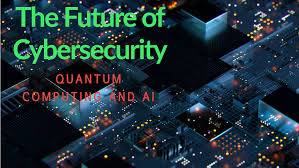CYBERSECURITY IN THE NEXT GENERATION OF COMPUTERS: QUANTUM ENCRYPTION AND BLOCKCHAIN
As computing technology evolves, so do cybersecurity challenges. The next generation of computers introduces both new vulnerabilities and advanced solutions, such as quantum encryption and blockchain, which are poised to redefine digital security and data protection.
Quantum Encryption: A New Standard for Security
Quantum computing threatens traditional encryption methods like RSA and ECC (Elliptic Curve Cryptography). These methods rely on the difficulty of factoring large numbers, a problem quantum computer can solve efficiently using algorithms like Shor’s Algorithm. As a result, existing systems could become vulnerable, putting sensitive data at risk.
Quantum encryption, particularly through Quantum Key Distribution (QKD), provides a robust solution. QKD uses the principles of quantum mechanics to generate and share encryption keys securely. Any attempt to intercept or measure the quantum key disrupts its state, alerting both sender and receiver to the breach. This inherent property of quantum mechanics makes QKD nearly unbreakable, ensuring secure communication even in a future dominated by quantum computers.
Blockchain: A Decentralized Defense Mechanism
Blockchain technology offers another revolutionary approach to cybersecurity. It relies on a distributed ledger system where every transaction or data entry is stored across multiple nodes. These entries are immutable and linked through cryptographic hashes, ensuring transparency and resistance to tampering.
In cybersecurity, blockchain can protect systems by preventing unauthorized access and ensuring data integrity. For example, smart contracts can automate secure transactions, while blockchain-based identity verification systems can reduce identity theft. Its decentralized nature also eliminates single points of failure, making systems more resilient to attacks.
The Synergy of Quantum Encryption and Blockchain
Combining quantum encryption with blockchain could create unprecedented levels of security. Blockchain’s transparency and immutability paired with the unbreakable nature of QKD can secure financial systems, healthcare data, and government communications against emerging threats.
Conclusion
The next generation of cybersecurity will be built on innovative technologies like quantum encryption and blockchain. As the digital landscape becomes more complex, these tools will ensure data remains secure, resilient, and protected against the evolving capabilities of cybercriminals and technological advancements.


